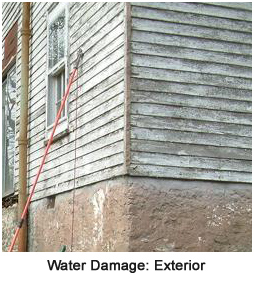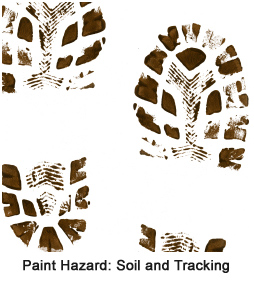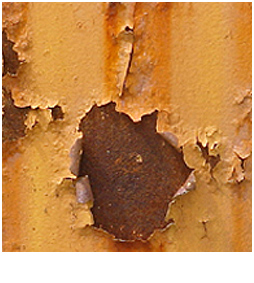Lead InformationWe are a Michigan Lead Risk Assessor Specializing in Lead Risk Assessments for Child-Occupied Facilities

Childhood Lead: Health EffectsChildhood lead exposure is one of the most common preventable poisonings affecting America’s next generation. According to the Center for Disease Control, 6% of all children ages 1-2 years and 11% of black (non-Hispanic) children ages 1-5 have blood lead levels in the toxic range. Lead is a potent poison that can affect individuals at any age. Children with developing bodies are especially vulnerable because their rapidly developing nervous systems are particularly sensitive to the effects of lead. Children’s physical development and behavior are adversely affected by lead poisoning even at minute levels. Even when exposed to small amounts of lead, children may appear inattentive, hyperactive and irritable. If not detected early, children with higher levels of lead in their bodies can suffer from: - Damage to the brain and nervous system
- Behavior and learning problems, such as hyperactivity
- Slowed growth
- Hearing problems
- Headaches
Lead in Toys
How children are exposed: The instinctive hand-to-mouth behavior that toddlers and even some older children exhibit is the normal route of exposure to toys painted with or containing lead. Toys may be painted or enameled or lead may be a constituent of the toy itself as in the case of plastics, makeups metal toys or other molded kinds of toys. The level of potential exposure, if any, depends on the lead content, condition of the toy, the potential for damage with use and the way the toy is played with. Lead in plastic is not regulated and may be present in some plastic toys. Sunlight can deteriorate plastic and cause the toy to release minute particles of lead dust over time. If the toy is mouthed and chewed by an infant or toddler it could result in exposure. Paint or baked enamel on metal toys may contain high levels of lead and may be more resistant to sunlight but can be damaged by friction, impact and the "toy abuse" typical of older children. In this case the child may not mouth the toy but may ingest lead by handling it and putting hands or fingers in their mouths. If you are concerned about a toy: Remove any toy from your child's collection if you suspect it may contain lead. Clean other toys stored in the same area and the storage area itself and dispose of the toy or have it tested. The Consumer Product Safety Commission (CPSC) and the Center for Disease Control (CDC) are the first resources to check for more information and an extensive list of recalled toys is available online. Lead testing for toys: Laboratories are able to test toys for lead, however, the cost is prohibitive. If you believe a toy contains lead and that your child has been exposed, you may still wish to retain the toy for later testing. There is no reliable home test for lead content in toys. Some surface-reading instruments used in the lead inspection industry and some other swab-type test kits have been used for a qualitative (yes or no) answer to whether lead is present. These tests are unreliable because they are unable to give a quantitative (how much) result. Also, they may give some indication of whether lead is present on the surface but may not detect lead content within the toy itself. Lead Hazards in the Home:Most children are exposed to lead in the home or child care setting. Housing built before 1950 is the most likely to contain lead-based paint, however, lead may be present in painted components in housing built as recently as 1978. Toddlers are hand-to-mouth explorers of their environments; they touch their world constantly and put hands, feet, toys and household items in their mouths. While childhood lead exposure can and does occur from ingesting paint chips, most children are exposed to lead-containing dust by this perpetual effort to “taste” their environment. Lead paint that has been broken down by friction, impact and water damage becomes ground into microscopic particles within household dust. Lead paint in the soil around houses and garages can be tracked into the home, adding more contamination to household dust. Children may also eat or swallow lead-contaminated soil, (pica) which increases their risk of exposure to lead. More recently there has been an increased awareness of lead hazards associated with toys and household items imported from overseas. Parents can best prevent childhood lead exposure by educating themselves about lead, asbestos and other hazards within their child’s environment. Guidance for Homeowners Hazard reduction measures should generally be performed by licensed and trained lead professionals using industry-proven engineering controls and methods. However, there are a number of immediate “housekeeping” things that will reduce lead-related hazards in the home: Restricting Access: It is always best to segregate your child from areas where damaged paint is present and/or accessible. Sometimes this may not be possible and other measures must be taken until the hazard can be corrected or eliminated. Deteriorated paint may be protected from little hands by covering them or moving furniture to conceal them. For example, window sills, ledges and horizontal surfaces can be covered with duct tape. An aversive agent containing denatonium benzoate may be applied to any surface to discourage children from mouthing or chewing a painted component. Lead in paint has a slightly sweet taste and it is common during a risk assessment to find window sills with bite marks along the edges. Cleaning: Any effort to clean leaded surfaces and, particularly, efforts to clean up lead-contaminated debris, may worsen a lead-contaminated situation. The Michigan Department of Health, Healthy Homes Division, provides a free downloadable guide to cleaning that homeowners should follow. Reducing Impact Damage: Base boards, walls and other household components often take a beating from busy feet and flying toys. When damage to these surfaces is discovered, a quick coat of paint will temporarily minimize exposure. If small amounts of paint need to be removed it is important to control any debris or dust that could be generated during the process. However, painting over lead-based paint with non-lead paint is not a long-term solution. Even though the lead-based paint may be covered, the lead-based paint may continue to loosen from the surface below and create lead dust. The new paint may also partially mix with the lead-based paint, and lead dust will be released when the new paint begins to deteriorate. Reducing Friction Damage: Floors surfaced with lead-based paint are serious routes of exposure, contaminating toys, clothing and little feet continually. While they are best dealt with by permanent methods, there are some measures that will be immediately helpful. Painting the floor is a quick, temporary fix if friction can be eliminated by installing carpet after painting. If carpet exists over a deteriorated, painted floor it will require disposal. Do not attempt to vacuum carpet or other surfaces with a vacuum that is not equipped with HEPA filtration. HEPA is an acronym for High Efficiency Particle Arrestor. HEPA filtration has been reliably proven to filter out 99.97% of airborne particles 0.3 micrometers in size. HEPA vacuums are used in the asbestos and lead abatement industries and may be commercially purchased or borrowed from most county health agencies. Friction damage on movable, surface-to-surface components such as window sashes and doors/ jambs is difficult to correct and should be performed by trained hazard reduction professionals. The only effective treatments may often be extensive repair or replacement due to damage or poor fit of the components involved. Reducing water damage: Exterior surfaces such as house walls, soffits and casings are not effectively treated by painting alone. Painting and the associated scraping will usually add more contamination to the soil around houses and garages unless done using strict engineering controls. If a homeowner chooses to perform these tasks it is essential that the soil be protected with plastic sheeting. Once again, wet methods are a critical part of the process along with control and containment of the paint chips and debris that will be generated during the work. The Centers for Disease Control (CDC) publishes a homeowners lead paint safety guide available online in PDF format or by calling Michigan’s Office of Lead and Healthy Homes at 517- 355-9390. The guide is written for homeowners and renovation contractors and is free of charge. The following safety precautions should be used any time you intend to treat a hazard on a deteriorated surface: - Pre-clean all surfaces in the work area including furniture that will remain, horizontal surfaces and even vertical surfaces as much as possible. Use the “Cleaning Guidelines” mentioned earlier. This first cleaning is important; if you are treating an existing hazard you need to start with the potential dust hazards that may have been caused, move on to the deteriorated paint hazard and perform a final cleaning at the end of your work.
- Keep children and pregnant women out of the work area until you finish the work and aggressively clean the area (See the “Cleaning Guidelines mentioned earlier)
- Contain the work area with heavy-gauge plastic sheeting. Seal off other rooms, heating ducts and any openings and clean the work area befor moving on to the next area.
- Cover or remove furniture, toys, food, dishes- everything in the work area including the floor and other horizontal surfaces. When covering items that must remain, use plastic sheeting and secure it to the floor with duct tape.
- Wet your work when removing or repairing painted surfaces. Wet methods minimize dust. You may use amended water (tap water with a small amount of soap) or there are other wetting agents available at your paint or hardware store. A wetting agent, or surfactant, makes water wetter by breaking down the surface tension of water molecules, allowing better penetration of dust and the paint itself. It is a critical component of your work.
- Protect yourself from exposure by using disposable coveralls and shoes. Cover your head and protect your eyes and use a respirator with HEPA filters. Only HEPA respirators and HEPA vacuum cleaners will filter lead dust. Simple paper or fabric dust masks will NOT protect a worker from lead dust.
- Do not eat, drink or smoke while performing the work.
- Perform a final cleaning of the work area by first cleaning and containing all debris generated. HEPA-vacuum and wet-wipe all plastic sheeting in the work area. Remove all disposable clothing and clean the exterior surfaces of your respirator, leaving it on until you carefully remove all plastic by folding or rolling it in on itself along with any disposable clothing or materials. Before leaving the work area, remove any residual dust from clothes with a HEPA filtered vacuum cleaner.
Lead Poisoning PreventionHave your child tested for an elevated blood lead level early in their development. Continue to monitor their level through those early years (6 years of age and younger) if you have reason to expect that lead may be present in their environment. Identify those potential lead hazards by having a lead risk assessment performed on your home. Ask your childcare provider or day-care facility if a risk assessment has been performed in their facility. When deteriorated lead-containing paint is present, the likelihood of exposure is obviously increased. Have a Michigan-licensed lead professional address all deteriorated paint through abatement or hazard reduction. If you are employing a contractor for renovation, be sure that your contractor is aware of hazards that he could be creating by the renovation tasks he is performing. Proper nutrition is also important in the prevention of lead poisoning, especially in young children. A balanced diet of grains, fruits, vegetables, dairy products and selections from meat, poultry, fish, dry beans, nuts or eggs can help decrease susceptibility to lead intoxication. It is particularly important to include adequate amounts of calcium and iron. Lead Hazard Reduction Abatement methods consist of removal, enclosing or encapsulating a building component. When a hazard is treated with abatement it must be performed by a Michigan-licensed abatement contractor. Renovation and remodeling contractors may perform some types of work (window, door or other component removal or enclosure) if the primary intent of the project is not to eliminate the hazard. Michigan law does not permit these contractors to use or advertise abatement methods and services without training and licensing.
Removal: While removal of building components with lead hazards may be done by the homeowner, it is never advisable. Removal is also frequently performed by poorly trained renovation contractors who have only a limited understanding of the hazards they create in homes across the nation. Occupant protection and worker safety are often ignored or unknown. Homeowners should be aware of Michigan’s and EPA’s “Pre-Renovation Education Rule requiring all contractors to provide lead hazard information to homeowners before conducting renovations and remodeling. In 1993-94 the Centers for Disease Control performed a study which revealed that 6.9% of children with elevated blood lead (EBL) were found to live in households where a renovation or remodeling activity occurred. While the types and processes associated with the work were not part of the study it is widely understood by the lead risk assessment community that much of the work involved window or door replacement or exterior painting. Encapsulation: Another abatement procedure performed by licensed lead abatement professionals involves the covering of lead-painted components with an impermeable liquid coating that safely seals the paint beneath. Encapsulants, when properly applied, will provide a durable and effective treatment of components with a large surface area (such as interior walls/ceilings/trim and exterior walls, soffits, casings) for about 20 years. They will need to be monitored for new damage and eventually re-applied. Enclosure: A more permanent hazard abatement method involves the construction of a permanent barrier on or over the component. Exterior siding and component wrapping, installation of drywall over existing walls and ceilings and the “boxing-in” of a component are all effective abatement methods. Household Lead Exposure: Likely SourcesWhile lead is a ubiquitous element found in nature, its presence in and around the home is the result of man’s application. Lead may be released in water supplies from solder used on domestic water piping. Lead may be released during hobby activities such as stained glass, soldering and fishing lure making. But the most frequent source of household lead exposure occurs when lead is found to be deteriorated on home structural components. Deteriorated lead-based paint on house exteriors ends up in perimeter soil and migrates from there into the home by tracking. Windows and doors and their individual parts are subject to impact, friction and water damage. Opening and closing them allows microscopic lead dust to migrate into the home. Interior house walls or appliances may also be painted with lead-containing paint. Floors damaged by friction can contribute even more directly to childhood exposure when children’s clothing and toys come into direct contact with the deterioration.
|








